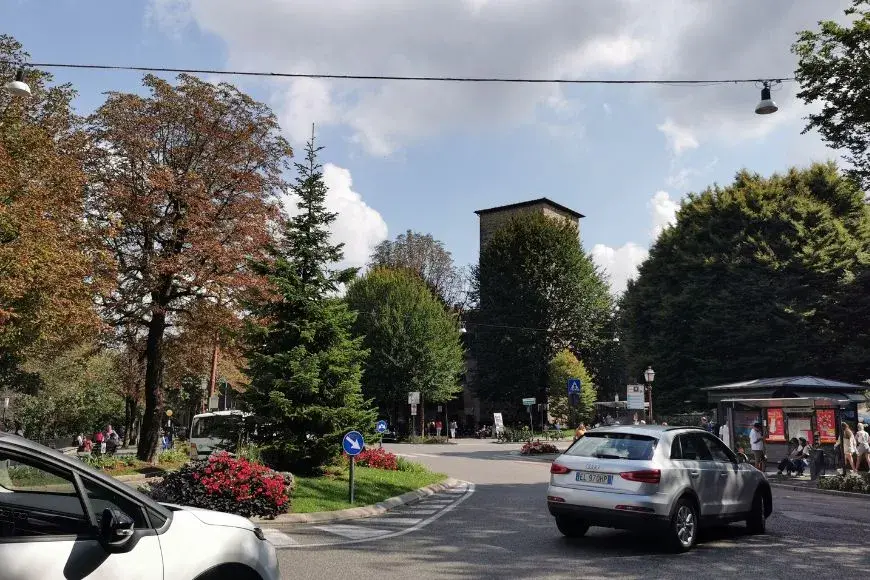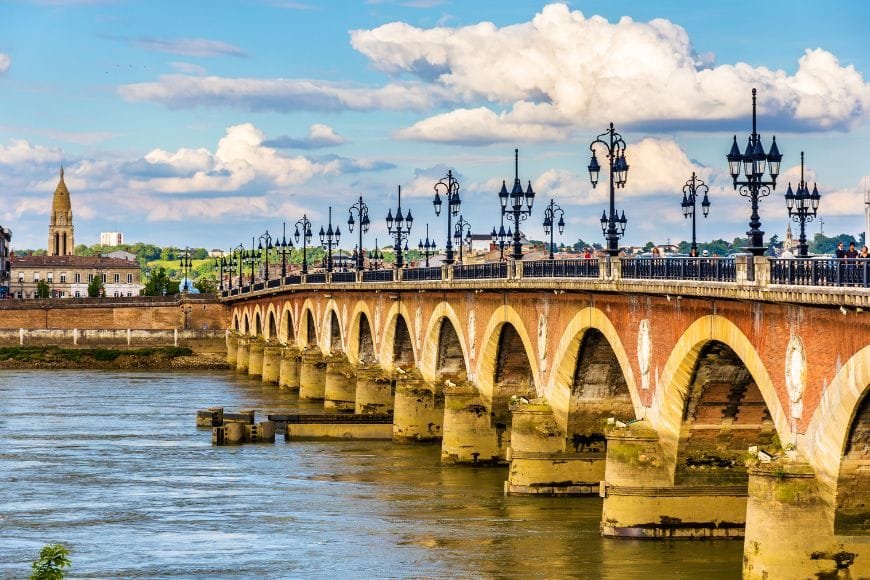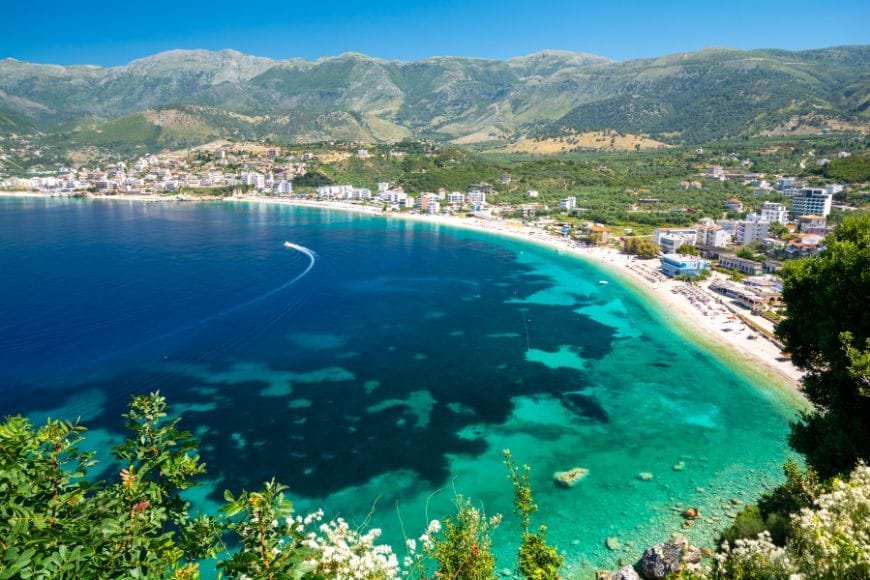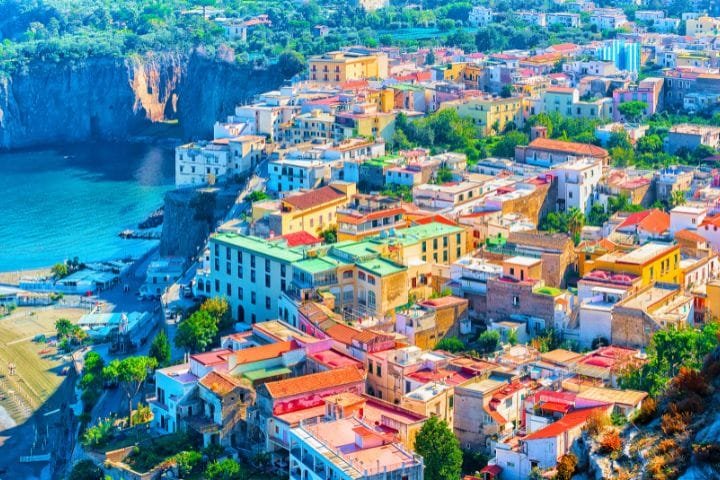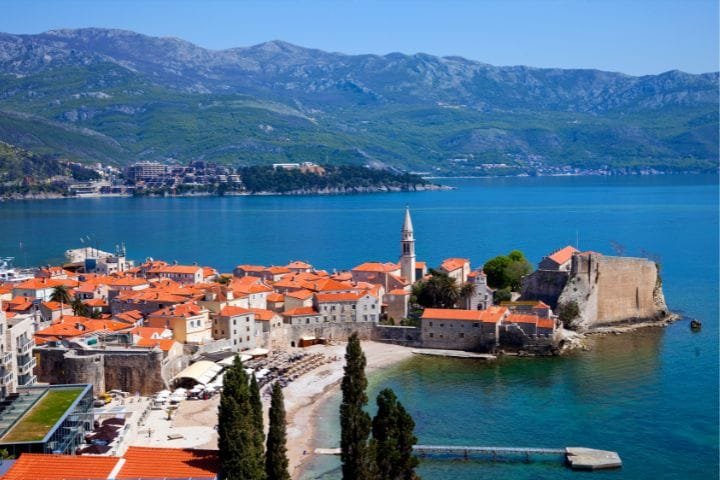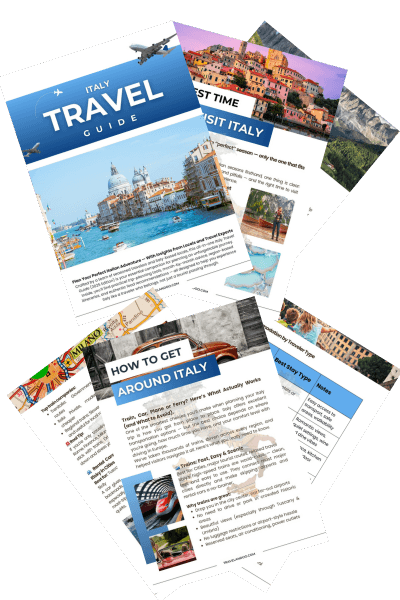Is It Worth Driving the Amalfi Coast? What You Need to Know

by Asia A. | Last Updated September 28, 2025
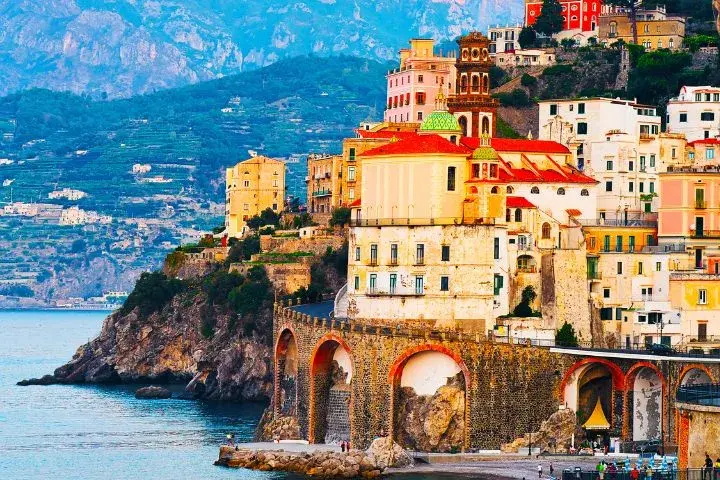
Bene, this is the question I get asked more than any other about southern Italy! After making this journey countless times over the years and watching my husband grapple with the decision of whether to attempt driving that famous SS163 coastal road each time we visit, plus observing thousands of other tourists face the same dilemma during our stays.
I can give you the honest answer that travel blogs won’t tell you: driving the Amalfi Coast is simultaneously one of the most spectacular and most stressful experiences you can have in Italy.
The legendary Amalfi Coast road is a narrow, winding route carved into cliffsides in the 1800s for horse-drawn carriages, now forced to accommodate modern tour buses, rental cars, and local traffic in spaces that barely fit a single vehicle. Yet this same road provides access to some of the world’s most breathtaking coastal scenery and authentic Italian experiences impossible to reach any other way.
The real answer to “is it worth it” depends entirely on your travel style, driving experience, and what you hope to gain from the experience. If you’re seeking Instagram-perfect photos and luxury coastal experiences while maintaining complete control over your itinerary, driving can be incredible.
If you’re easily stressed by challenging driving conditions, prefer relaxation over adventure, or traveling with nervous passengers, alternative transportation might serve you better. Let me break down everything you need to know to make the right decision for your Italian coastal adventure.

The Reality of Driving the Amalfi Coast: Honest Assessment
As a Milanese who’s used to our efficient northern highways, that famous SS163 narrow coastal road is a completely different beast that tests even confident Italian drivers. I’ve witnessed everything from pure terror to absolute joy, often from the same driver within the same hour!
The SS163 road is an engineering marvel carved into cliffsides in the 1800s, but it was designed for horse-drawn carriages, not modern tour buses sharing space with nervous tourists in rental cars. The road is genuinely narrow – in many sections, two cars can barely pass without one pulling into designated pullouts.
Traffic density during peak season creates a perfect storm of stress. Massive tour buses lumber around blind curves, local drivers who know every centimeter zip past with millimeters to spare, and rental cars driven by terrified tourists crawl along, creating dangerous backup situations. I’ve seen traffic jams lasting three hours for a normally 30-minute drive.
Seasonal variations are dramatic. July and August bring absolute chaos with bumper-to-bumper traffic, screaming children in overheated cars, and parking situations that would challenge a Formula 1 driver. But April, May, September, and October? The same roads become manageable, even enjoyable.
The skill requirements are real – this isn’t a Sunday drive through countryside. You need confidence with narrow mountain roads, experience judging distances precisely, and nerves that don’t crack when a bus approaches with what seems like impossible clearance.
Time considerations reveal the harsh reality – the 50-kilometer coastal drive that should take an hour often requires 3-4 hours during peak periods. Factor in parking searches, and your “quick scenic drive” becomes an all-day ordeal.
- Peak season traffic can triple normal driving times between coastal towns
- Skill level required – mountain driving experience and confident maneuvering are essential
- Stress factors include narrow passages, cliff drops, and parking nightmares
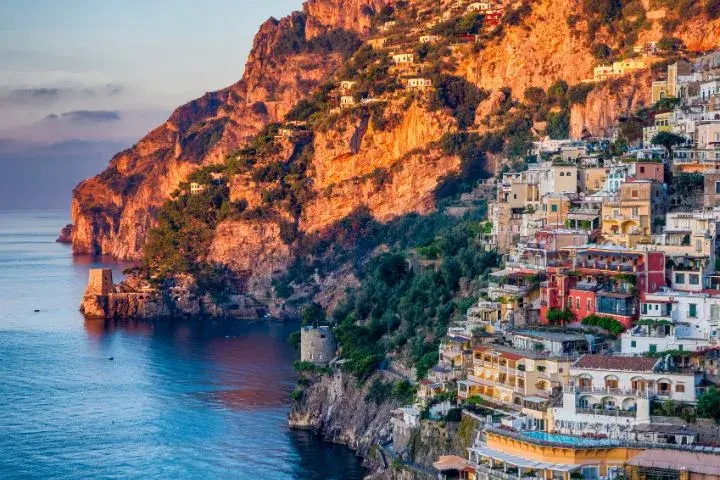
Compelling Reasons to Drive the Amalfi Coast
Despite the challenges, driving provides unmatched freedom to discover the authentic Amalfi Coast that tour groups never see. When you have your own car, you can stop at that perfect viewpoint when the light is magical, explore hidden beaches accessible only by unmarked roads, or simply pull over when something captures your imagination.
Complete itinerary control means you’re not bound by ferry schedules or tour group timing. Want to watch the sunrise from Ravello’s gardens? Drive up in the darkness and have the place to yourself. Discover a family restaurant with incredible sea views? Stay for a long lunch without worrying about missing the last bus.
Access to hidden gems becomes possible only with personal transportation. I know beaches accessible by hiking trails that start from roadside parking, family wineries up mountain roads that buses can’t navigate, and viewpoints where you can photograph the coast without crowds because they’re between major stops.
Photography opportunities multiply exponentially when you control timing and positioning. The famous coastal light changes constantly, and having a car means you can chase the perfect golden hour shot or return to locations when conditions are optimal.
Luxury accommodation access often requires personal transportation. Many of the coast’s most spectacular hotels perch on clifftops or nestle in coves accessible only by private roads. These properties often provide the most authentic Amalfi Coast experiences.
Multi-day flexibility allows deep exploration rather than surface tourism. You can spend mornings in quiet fishing villages, afternoons at hidden beaches, and evenings at mountain restaurants that locals frequent – experiences impossible through organized tourism.
- Complete schedule freedom – stop anywhere, anytime for perfect moments
- Hidden location access – beaches, villages, and viewpoints unreachable by public transport
- Photography control – optimal timing and positioning for spectacular shots
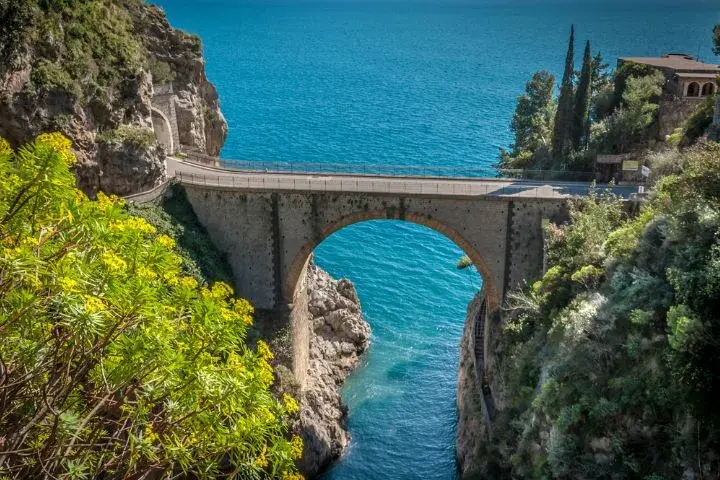
Strong Arguments Against Driving the Amalfi Coast
The stress levels can be overwhelming, especially for drivers unaccustomed to narrow European mountain roads. I’ve watched confident drivers nervous around cliff-hanging curves while tour buses approach with seemingly impossible clearance.
Parking nightmares represent the biggest practical challenge. Positano has maybe 50 public parking spaces for thousands of daily visitors. Amalfi’s parking fills by 9 AM during peak season. Even when you find spaces, they cost €25-30 per day and often require steep walks carrying luggage and supplies.
Traffic delays during summer weekends can turn the scenic coastal drive into hours of gridlock where you’ll move maybe 5 kilometers per hour while engines overheat and tempers flare. The stress destroys any relaxation or enjoyment the coast should provide.
High accident risk exists because the roads demand constant attention and skill. Distracted driving becomes dangerous quickly when you’re inches from cliff edges. Even minor accidents create major disruptions because emergency vehicles can’t reach incidents easily.
Alternative transportation often provides superior experiences. Ferries offer spectacular water-level coastal views impossible from cliff roads. Local buses eliminate parking stress while providing the same access to major destinations without driving challenges.
Cost considerations accumulate quickly – parking fees, premium fuel costs, potential damage from narrow passages, traffic fines from ZTL zones, plus the hidden cost of vacation stress that ruins relaxation and enjoyment.
- Extreme stress levels can ruin vacation enjoyment for nervous or inexperienced drivers
- Parking costs €25-30/day, with extremely limited availability, requiring long walks
- Alternative transport often provides better experiences with less stress and cost
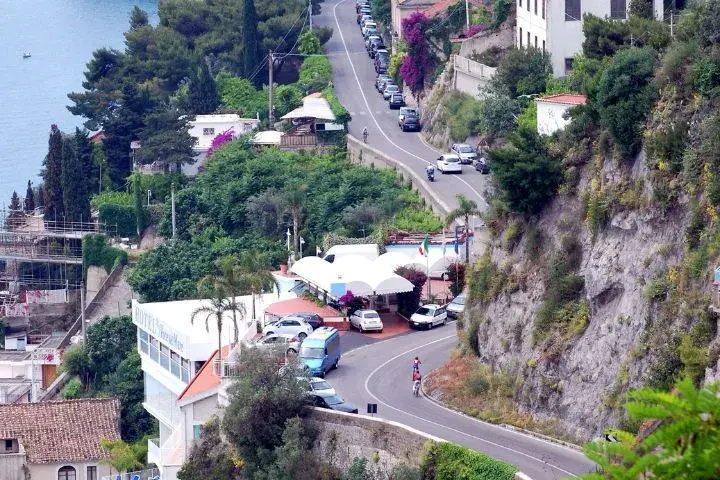
Alternative Transportation Options and Their Benefits
Ferry services provide the most spectacular way to experience the Amalfi Coast because the dramatic cliffs and coastal villages were designed to be approached from the sea. Regular ferries connect all major towns with comfortable seating, spectacular views, and none of the driving stress.
Local bus networks offer frequent and reliable service, connecting every coastal destination with air-conditioned comfort and local driver expertise. The SITA buses know exactly how to navigate the narrow roads and provide commentary about local sites and culture.
Private drivers and tours combine local expertise with personalized service. These professionals know every curve, have relationships with parking attendants, and can provide cultural insights impossible for visiting drivers to access independently.
Helicopter transfers represent the ultimate luxury option, providing breathtaking aerial perspectives of the coastline while eliminating all ground transportation challenges. Several companies offer scenic flights and point-to-point transport.
Train connections via Sorrento and Salerno provide efficient access to the coastal region with onward ferry or bus connections. This combination eliminates highway stress while maintaining excellent access to coastal experiences.
Combination strategies work best for many visitors – perhaps driving to Sorrento for regional exploration flexibility, then using ferries and local transport for stress-free coastal touring without the parking and traffic challenges.
- Ferry services provide spectacular water-level views impossible from cliff roads
- Local buses offer air-conditioned comfort with expert local drivers
- Combination approaches balance flexibility with stress-free coastal access
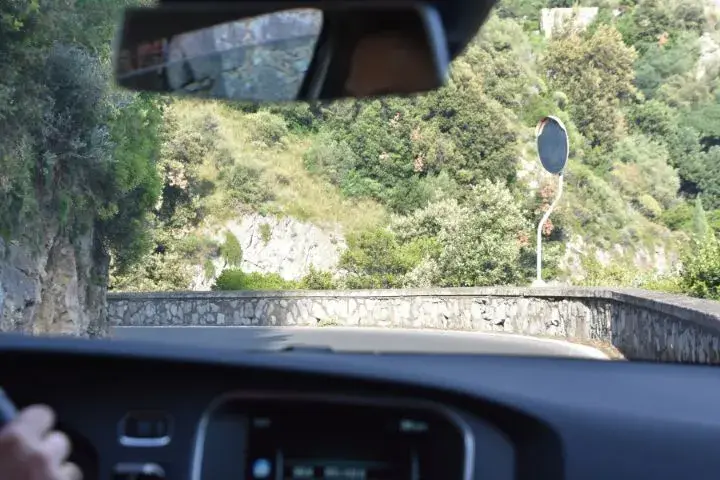
If You Decide to Drive: Essential Preparation and Strategies
Vehicle selection critically affects your experience. Choose the smallest car that meets your luggage needs – compact cars navigate narrow passages and fit in tiny parking spaces that larger vehicles simply cannot access. Automatic transmission helps on steep grades with stop-and-go traffic.
Timing strategies can make or break your driving experience. Visit during shoulder seasons (April-May, September-October) for manageable traffic. Drive early morning (before 9 AM) or late afternoon (after 6 PM) when tourist traffic subsides and lighting becomes spectacular.
Route planning requires realistic time estimates and backup options. Plan key stops but maintain flexibility for traffic delays. Identify parking areas in advance and have alternative routes when main roads become impassable due to traffic or incidents.
Parking solutions demand advanced research and early arrival. Many hotels offer parking (for substantial fees), while public areas fill extremely early. Consider accommodations with included parking or locations outside town centers with shuttle services.
Navigation tools should include offline maps because coastal tunnels and mountain areas often lack cell coverage. Download detailed local maps and identify alternate routes because GPS systems sometimes suggest impossible passages for tourist drivers.
Emergency preparedness includes breakdown procedures specific to mountain coastal roads. Know your rental company’s emergency procedures, carry essential supplies, and understand that help may be delayed due to traffic and geographical challenges.
- Choose the smallest possible vehicle – compact cars are essential for narrow passages and parking
- Visit shoulder seasons for manageable traffic and better weather conditions
- Plan parking strategies in advance – spaces fill extremely early during peak periods
Specific Challenges by Coastal Town and Solutions
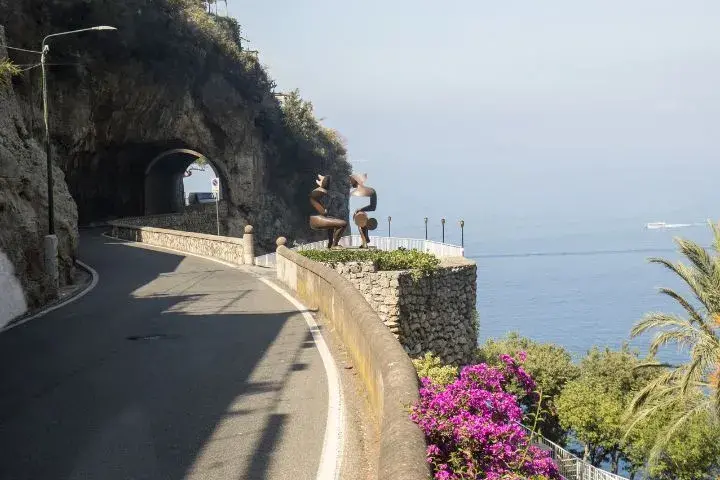
Positano presents the ultimate driving challenge because this vertical village clings to cliffsides with extremely limited parking and narrow access roads. The main parking area requires steep walks with luggage, and spaces cost €30+ per day when available.
Amalfi town navigation involves historic center restrictions and one-way systems that confuse GPS. The main parking fills by 8 AM during peak season, and alternative spaces require significant walks through crowded streets carrying vacation supplies.
Ravello approaches via mountain roads that are narrow and winding but less crowded than coastal routes. The elevated position provides spectacular views, and parking is slightly more available, though still limited and expensive.
Sorrento Peninsula traffic patterns create bottlenecks as you approach the Amalfi Coast. Consider staying in Sorrento and using ferries for coastal exploration rather than fighting traffic on the narrow coastal road.
Hidden beach access often requires hiking from roadside parking rather than driving directly to the beaches. Many of the coast’s most beautiful beaches are accessible only on foot or by boat, making car access less valuable than initially expected.
Accommodation logistics vary dramatically by property. Some luxury hotels provide valet parking and shuttle services, while others expect guests to navigate narrow access roads and park independently in challenging conditions.
- Positano parking costs €30+/day with extremely limited availability and steep walks
- Amalfi restrictions include one-way systems and historic center access limitations
- Consider Sorrento base with ferry access for coastal exploration without driving stress
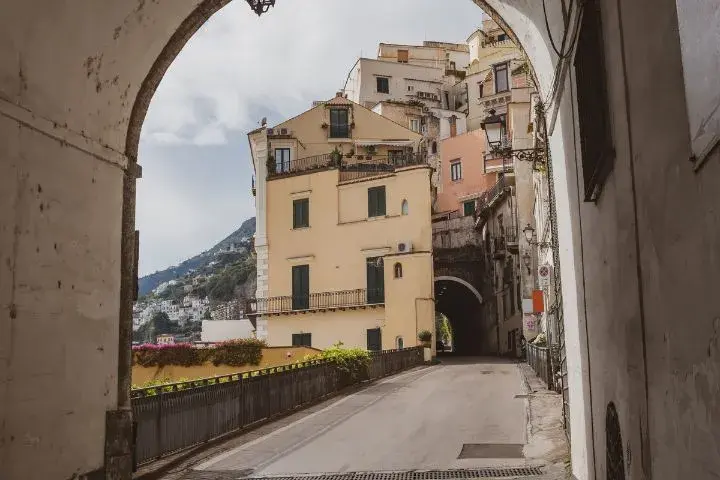
Cost Analysis: Driving vs. Alternative Transportation
Direct driving costs accumulate quickly beyond initial rental fees. Daily parking ranges from €20-30, premium coastal fuel costs significantly more than inland stations, and highway tolls add up on longer routes to reach the coast.
Hidden expenses include potential damage from narrow passages (very common), traffic fines from restricted zones, and the intangible cost of vacation stress that can ruin relaxation and family harmony during supposedly enjoyable experiences.
Alternative transport pricing varies by season and service level. Ferry day passes cost €15-25, local buses run €2-5 per trip, while private drivers charge €200-400 for full-day service but eliminate all stress and parking challenges.
Value proposition analysis should consider the cost per hour of actual enjoyment rather than the total transportation expense. Spending 4 hours in traffic for a 1-hour scenic drive provides poor value compared to stress-free alternatives.
Luxury alternatives like helicopter transfers (€150-300 per person) or private yacht charters (€1000+ per day) provide spectacular experiences that justify premium pricing for special occasions or affluent travelers.
Budget strategies might combine driving to the general region with alternative transport for coastal exploration, maximizing flexibility while minimizing the most stressful and expensive driving challenges.
- Daily parking costs €20-30 plus fuel premiums and potential damage expenses
- Ferry day passes €15-25, providing stress-free access to all coastal towns
- Value analysis should consider enjoyment hours versus total time and stress costs
Expert Recommendations Based on Traveler Profiles
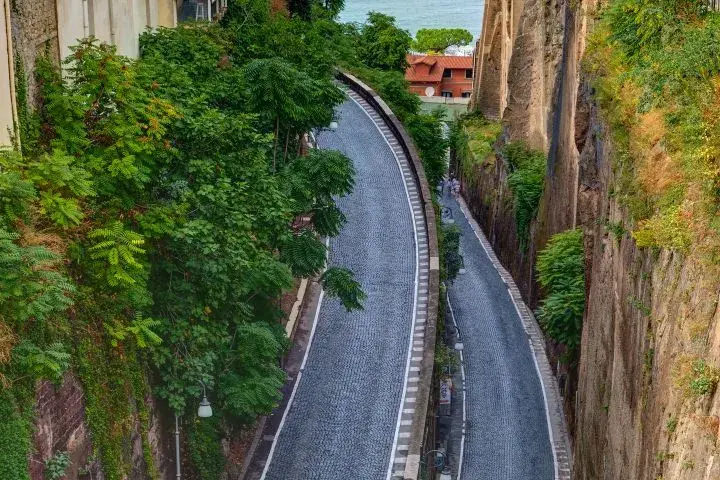
Experienced mountain drivers who thrive on challenging roads and have confidence with narrow European driving might find the Amalfi Coast driving experience exhilarating rather than stressful. These travelers should visit during the shoulder seasons and prepare extensively.
First-time visitors should strongly consider alternative transportation for initial coastal exploration. The stress and logistics of driving can prevent appreciation of the spectacular scenery and cultural experiences that make the Amalfi Coast special.
Families with children face additional challenges because narrow roads with cliff drops create safety concerns, while parking difficulties and traffic delays can turn family vacations into stressful ordeals that children remember negatively.
Luxury travelers often find that private drivers or helicopter transfers provide superior experiences with local expertise, cultural insights, and stress-free access to exclusive experiences that justify premium pricing.
Adventure seekers might combine limited driving with extensive hiking and boat exploration, using cars to access trailheads and marina areas rather than attempting to drive the entire coastal route.
Photography enthusiasts need cars for optimal timing and positioning, but should plan extensively for parking and access challenges while carrying valuable equipment through crowded areas and steep walks.
- Experienced drivers should visit shoulder seasons with extensive preparation and realistic expectations
- First-time visitors benefit more from stress-free alternatives that allow scenic appreciation
- Luxury travelers find that private drivers provide superior experiences with local expertise
Final Words
Is driving the Amalfi Coast worth it? The honest answer depends entirely on your driving experience, stress tolerance, and vacation priorities. For confident mountain drivers who plan carefully and visit during optimal times, the freedom and access can create unforgettable experiences. For travelers seeking relaxation and cultural immersion, alternative transportation often provides superior value and enjoyment.
After years of visiting here and observing thousands of visitors, I’ve learned that the most successful Amalfi Coast experiences often combine approaches.
Consider driving to Sorrento for regional flexibility, then using ferries for a stress-free coastal exploration. Or hire a local driver for one perfect day while using buses and ferries for independent exploration.
The key insight is that the Amalfi Coast’s extraordinary beauty isn’t diminished by how you choose to experience it; this spectacular coastline offers transformative experiences.
My advice? Be brutally honest about your driving skills and vacation goals. If challenges energize you and control matters more than comfort, driving can be incredible. If you prefer relaxation over adventure, alternative transport will serve you better. Either way, the memories you create along this legendary coastline will last a lifetime.
Qualunque sia la vostra scelta, la Costiera Amalfitana vi aspetta! Whatever your choice, the Amalfi Coast awaits you! Andiamo a scoprire questo paradiso in modo intelligent!
FAQs on Is It Worth Driving the Amalfi Coast?
Is driving the Amalfi Coast really that difficult?
Yes, the SS163 coastal road is genuinely challenging with narrow passages carved into cliffs in the 1800s, now shared by tour buses, local traffic, and tourist cars.
The road requires confident mountain driving skills, patience with aggressive local drivers, and nerves that don’t crack around blind curves with dramatic cliff drops.
However, experienced drivers who visit during shoulder seasons often find it manageable and rewarding.
What are the main alternatives to driving the Amalfi Coast?
Ferry services provide spectacular water-level coastal views, local SITA buses offer frequent connections between all towns, and private drivers eliminate stress while providing local expertise.
Ferries cost €15-25 for day passes, buses run €2-5 per trip, while private drivers charge €200-400 daily but include parking solutions and cultural insights impossible for visiting drivers to access.
How much does parking cost on the Amalfi Coast, and is it available?
Parking costs €20-30 per day when available, but spaces are extremely limited and fill by 8-9 AM during peak season. Positano has maybe 50 public spaces for thousands of daily visitors, while Amalfi’s parking requires early arrival and steep walks to the town centers.
Many visitors spend more time searching for parking than enjoying coastal experiences.
When is the best time to drive the Amalfi Coast if I decide to do it?
Visit during shoulder seasons (April-May, September-October) on weekdays, driving early morning (before 9 AM) or late afternoon (after 6 PM) for manageable traffic.
Absolutely avoid summer weekends when traffic can take 3+ hours for normally 30-minute coastal drives. July and August bring nightmare conditions with bumper-to-bumper traffic and overheated vehicles.
Should first-time visitors attempt driving the Amalfi Coast?
No, first-time visitors should use alternative transportation to appreciate the scenery without driving stress. The challenge of narrow roads, parking difficulties, and traffic delays can prevent the enjoyment of the spectacular coastal beauty.
Consider ferries or buses for initial visits, then decide about driving on future trips when you understand the coastal layout and challenges.
💬 We’d love to hear from you!
Have questions, tips, or personal travel stories to share? Drop them in the comments below — your insights help fellow travelers plan their adventures too.




